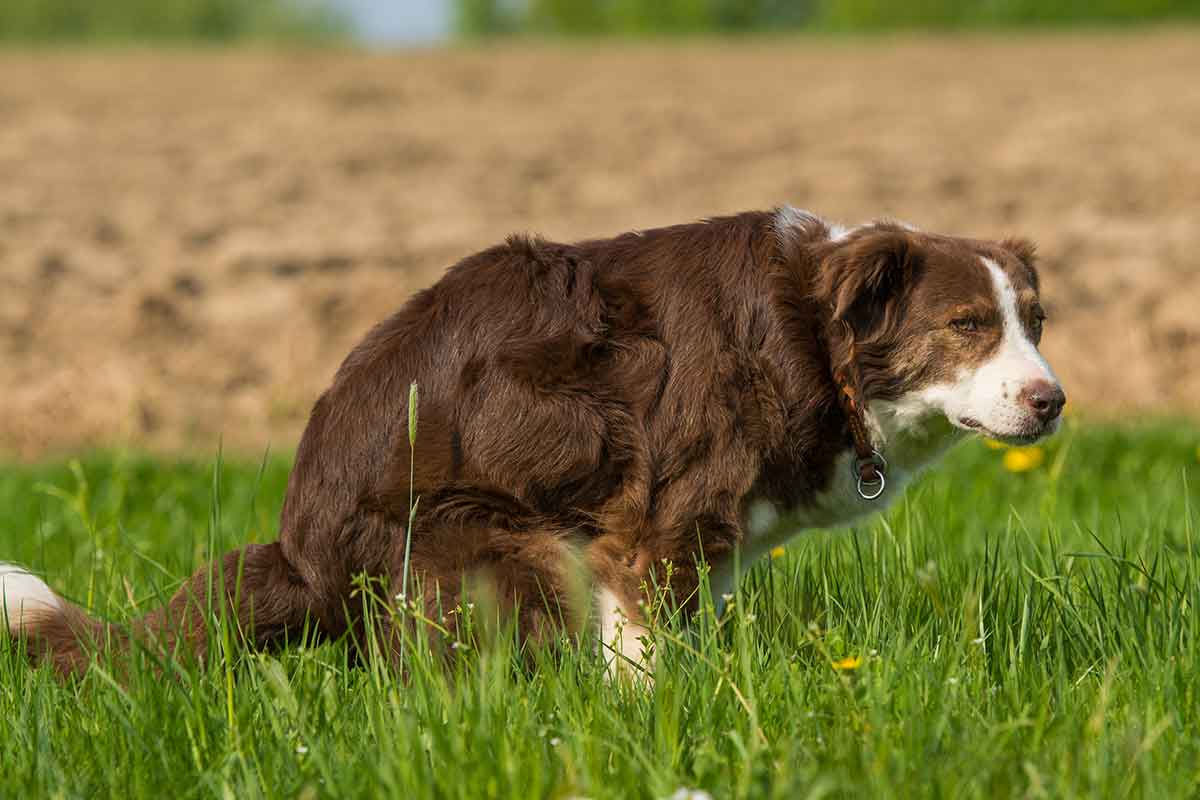Elated and relieved people all over proclaim “Good potty!” and “Good pee!” when their dogs perform these necessities during leashed walks. But when is the last time you really looked at your dog’s poop?
And how much attention do you really pay to the clumps you scoop each day from your cat’s litter box?
One of the best ways to be your pet’s best health ally is to know what bathroom behaviors and “deposits” are normal. That’s because they provide critical clues to your pet’s overall physical and emotional health.
Pee And Poop Secrets
Veterinarians often refer to urine as “liquid gold” and scrutinize the color, texture, and other factors of feces on a scale of 1 to 7. Your pet’s urine should be a shade of yellow and free of any pungent odor.
“It is important to note the volume, color, and consistency of your pet’s urine,” says Kenneth Martin, DVM, a board-certified veterinary behaviorist who operates Veterinary Behavior Consultations with his wife, Debbie Martin, a veterinary technician behavior specialist, in Spicewood, Texas. “We evaluate the urine for infections, any signs of inflammation in the bladder, evidence of crystals, and identify the levels of glucose that may indicate diabetes.”
As for poop, well, that matters, too. Veterinarians analyze feces for signs of parasites or diseases. Your hope is that your cat or dog scores a “3” or “4” on the poop scale for being nicely formed, brown in color, and lacking a strong odor. You don’t want your pet’s poop to score a “1” (resembling tiny, rock-hard pellets) or a “7” (a stinky poo puddle).
Collecting Samples
It may seem like a hassle–or impossibility–to collect fresh feces and urine samples from your pet to bring in for the annual wellness exam at the veterinary clinic. But it can and should be done at least once a year.
Dr. Martin points out that bringing in fresh samples from your pet can be far less stressful on your pet than having a veterinary technician try to obtain samples during the veterinary exam.
Collecting poop samples at home is easier for everyone, including pets. Wear disposable gloves and plop the fresh droppings into a plastic bag and seal it. Then immediately wash your hands thoroughly with warm water and soap to reduce the risk of coming into contact with possible intestinal parasites, such as roundworms, hookworms, and whip worms, that may be in your pet’s feces.
Bringing in a fresh urine sample can be a bit trickier. At the veterinary clinic, the main urine collection options are what’s known as a “free catch sample” (obtained by allowing the pet to void on her own and gathering or catching the urine into a sterile pan) or cystocentesis (a quick and relatively painless procedure that extracts urine by inserting a needle into the bladder).
Both procedures can be stressful to a dog or cat who may already be anxious and a bit frightened inside the clinic.
Adds Debbie Martin, “When a sterile sample is not needed, we suggest allowing dogs at the clinic opportunities to eliminate on walks and provide cats with some special litter that is nonporous to collect urine from the litter box, but it is much better in terms of stress to allow the dog or cat to eliminate on their own at home than having us obtain these samples in the clinic.”
Lisa Lippman, DVM, a house call veterinarian in New York City, knows it can be especially challenging to obtain fresh urine samples during bathroom outings, so she offers this step-by-step guide to reduce stress in you and your dog:
- Time sample collection after your dog has drunk a lot of water from the bowl in the house.
- Have a sterile urine cup handy for male dogs who hike their legs or a sterile soup ladle for female dogs who squat.
- Place your dog on leash in an enclosed area such as your back yard. If possible, have someone hold the leash while you calmly station yourself behind your dog.
- Make the urine mission pleasant for all by speaking in an upbeat and encouraging tone to your dog.
- Quickly and quietly place the cup or ladle under your dog–but not touching your dog–when he or she is getting into position to urinate.
- Reward your dog with treats and praise to reduce stress or fear.
- Pour urine into a sealed container encased with ice packs to keep it fresh and cool.
To collect fresh urine samples from your cat at home, it is best to obtain one within four hours of the veterinary appointment. Using a clean litter box, fill it with a layer of non-absorbent litter that enables you to collect a urine sample using a clean syringe. Or you can purchase a cat collection urine kit (such as Kit4Cat) that features hydrophobic sand you pour into a clean litter box. You collect the urine using a pipette and vial provided in the packaging. Store the sealed urine sample in the refrigerator until it is time for the veterinary appointment.
This article was reviewed/edited by board-certified veterinary behaviorist Dr. Kenneth Martin and/or veterinary technician specialist in behavior Debbie Martin, LVT.








